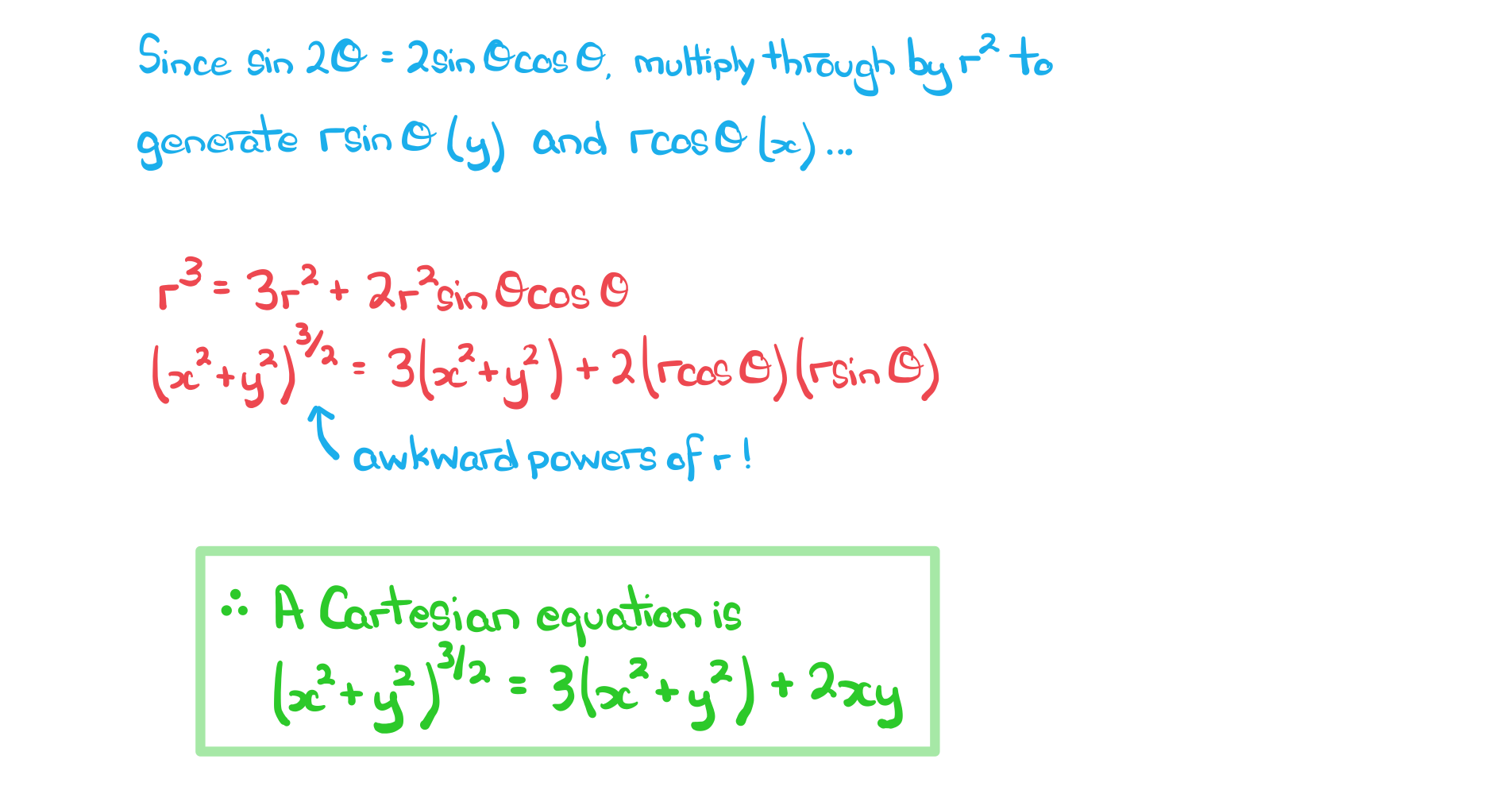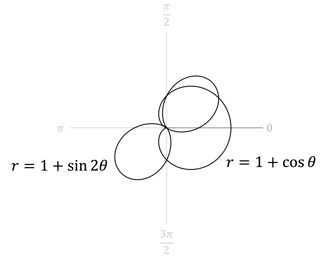Intro to Polar Coordinates
What are polar coordinates?
- Polar coordinates are an alternative way (to Cartesian coordinates) to describe the position of a point in 2D (or 3D) space
- In 2D, the position of a point is described using an angle, θ and a distance, r
- This is akin to “aiming in the right direction”, then “travelling so far in that direction”
- Polar coordinates generally make working with circles, spirals and similar shapes easier
- (3D) polar coordinates are beyond the A level syllabus but they are used with objects based on spheres such as the planets in the solar system
How do I describe the position of a point using polar coordinates?
- Point P would be described by the coordinates (r, θ)
- θ is measured in radians, anti-clockwise from the initial line (equivalent to the positive x-axis)
- Negative values of θ can be used (clockwise from the initial line)
- r is the (straight line) distance between the pole (origin) and point P
- r is usually given as a function of θ, r = f(θ)
- equations can be given implicitly too, e.g. r 2 = f(θ)
- A half-line starts at the pole and extends outwards in the direction of θ
- The equation of a haf-line will be of the form
, where
is a constant
- The line represents positive values of r
- Negative values of r are possible but are not included in Edexcel A level Further Mathematics
- The equation of a haf-line will be of the form

What is the connection between polar coordinates and Cartesian coordinates?
- These results are not provided in the formulae booklet
- they are easily derived from a sketch and basic trigonometry
- Be careful solving
so that θ locates point P in the correct quadrant
- Always use a sketch to ensure θ is measured from the initial line
- Check the domain of θ to see if negative values are used
- e.g. 0 ≤ θ < 2π as opposed to -π ≤ θ < π
- This is very similar to the modulus-argument form of a complex number
where
and
How do I convert from polar coordinates to Cartesian coordinates?
To convert the point P(r, θ) to P(x, y)
- Find the x-coordinate using
- Find the y-coordinate using
- In both cases take care with which quadrant P lies in
- A sketch is the easiest way to double check
- In both cases take care with which quadrant P lies in
How do I convert from Cartesian coordinates to Polar coordinates?
To convert the point P(x, y) to P(r, θ)
- Find r using Pythagoras’ theorem
- r will (generally) take the positive square root since it is a distance (from the pole)
- (It is possible for r to be negative, depending on the nature of f(θ))
- Find θ by using a sketch in association with
- Use the sketch to ensure θ locates point P in the correct quadrant
- There may be the need to add or subtract π to get θ in the correct quadrant
Exam Tip
- Ensure your calculator is in radians mode when working with polar coordinates
- Note how polar coordinates (r, θ) are given in the order r then θ, even though
Worked example
(a) Convert the polar coordinates to Cartesian coordinates.

(b) Convert the Cartesian coordinates to polar coordinates.












